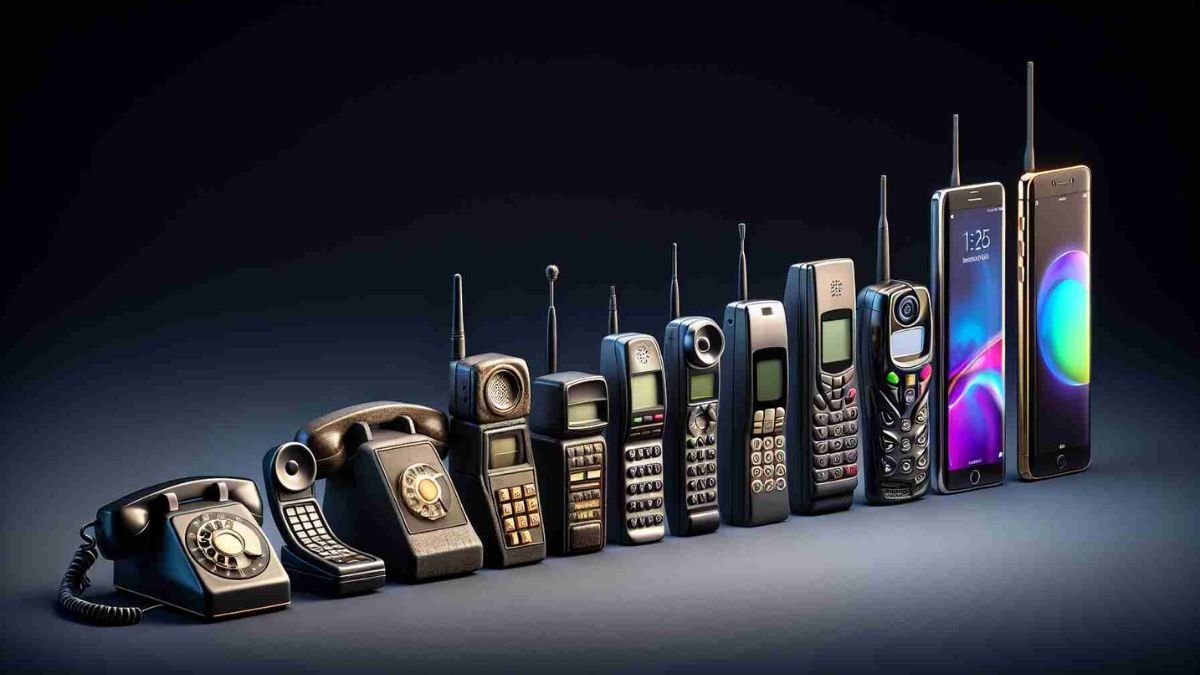The journey of smartphones is a fascinating tale of rapid technological advancements and shifting consumer needs. From their humble beginnings as basic communication tools to their current status as indispensable multi-functional devices, smartphones have undergone an extraordinary evolution. This article explores the significant milestones in the development of smartphones, highlighting key innovations and their impact on our lives.
The Birth of Mobile Communication
The Early Days: From Basic Phones to the First Smartphones
The history of smartphones begins with the inception of mobile phones in the 1970s. The first mobile phone, the Motorola DynaTAC 8000X, released in 1983, was a groundbreaking innovation, offering wireless communication in a bulky, yet revolutionary device. It was far from the sleek gadgets we use today, but it set the stage for future developments in mobile technology.
As we moved into the 1990s, the landscape began to shift with the introduction of early smartphones. The IBM Simon Personal Communicator, launched in 1994, is often credited as the first true smartphone. It combined a mobile phone with features such as a touchscreen, calendar, address book, and email. Despite its limited capabilities by today’s standards, the IBM Simon was a precursor to the more advanced smartphones that would follow.
The Rise of Touchscreens and Smart Features
The Dawn of Modern Smartphones: The iPhone Era
The early 2000s marked a significant turning point in the evolution of smartphones with the advent of touchscreen technology. The introduction of the Apple iPhone in 2007 was a game-changer, revolutionizing the way we interact with mobile devices. The iPhone’s sleek design, intuitive touchscreen interface, and the App Store’s ecosystem set new standards for the smartphone industry.
Apple’s emphasis on design and user experience paved the way for other manufacturers to innovate. The iPhone’s impact was so profound that it shifted the focus from physical keyboards and buttons to touch interfaces. This transition allowed for more versatile and user-friendly devices, changing how we interacted with technology on a daily basis.
The Era of App Revolution
Expanding Functionality: The Rise of Mobile Applications
With the introduction of the App Store, smartphones began to evolve beyond their primary functions of communication and entertainment. Mobile applications, or apps, became a central feature of smartphones, allowing users to customize their devices to suit their needs. This era saw the emergence of apps for virtually every conceivable purpose, from productivity tools and social media platforms to games and health monitoring.
The proliferation of apps contributed significantly to the smartphone’s role as an all-in-one device. Users could now manage their schedules, track fitness goals, navigate cities, and connect with friends and family through a single device. The app revolution also led to the rise of mobile-first companies and a shift in how businesses approached digital marketing and customer engagement.
Advancements in Hardware and Software
Enhancing Performance: The Role of Hardware Innovations
As smartphones evolved, so did the hardware that powered them. The introduction of multi-core processors, high-resolution displays, and advanced cameras significantly enhanced smartphone performance. Each new generation of smartphones brought improvements in speed, graphics, and battery life, making them more capable and efficient.
For instance, the transition from 3G to 4G LTE networks brought faster internet speeds, enabling seamless streaming, quicker downloads, and improved connectivity. The subsequent introduction of 5G technology has further accelerated data transfer rates, reducing latency and supporting new applications such as augmented reality (AR) and the Internet of Things (IoT).
Software Innovations: From iOS to Android
On the software front, the competition between iOS and Android has driven rapid advancements. Apple’s iOS and Google’s Android operating systems have continually evolved, incorporating new features and improvements with each update. iOS introduced features such as Siri, Apple Pay, and Face ID, while Android offered customization options, Google Assistant, and a wide range of device compatibility.
The rivalry between these two platforms has spurred innovation, leading to the development of advanced security features, intuitive user interfaces, and integration with other technologies. This competition has also encouraged third-party developers to create a diverse array of applications, further enhancing the smartphone experience.
The Future of Smartphones: Emerging Trends
From Foldable Screens to AI Integration
Looking ahead, the future of smartphones is poised to be shaped by several emerging trends. One of the most exciting developments is the advent of foldable and flexible screens. Devices such as the Samsung Galaxy Fold and Huawei Mate X demonstrate the potential for smartphones to transform into tablets or other forms, offering greater versatility and functionality.
Artificial intelligence (AI) is another area of rapid advancement. AI-powered features, such as improved voice recognition, personalized recommendations, and enhanced photography capabilities, are becoming increasingly prevalent in modern smartphones. AI integration promises to make devices more intuitive and responsive to user needs, further blurring the lines between technology and human interaction.
Conclusion: A Technological Marvel
The evolution of smartphones from early devices to modern marvels is a testament to the relentless drive for innovation in technology. From the bulky mobile phones of the 1980s to the sleek, multifunctional devices of today, smartphones have transformed the way we live, work, and connect. As technology continues to advance, we can only imagine the next chapter in this remarkable journey, where smartphones will undoubtedly play an even more integral role in our daily lives.
